Solving the 12 Most Common Customer Problems [Guide]
10 min read

A surefire way to improve engagement and retention is to focus on solving customer problems.
Think about it – what would you do if you needed help but all you got was an incredibly unhelpful customer service agent? Chances are, you would take your business elsewhere.
That is precisely why you need to focus on improving your customer service problem-solving and providing excellent support focused on reducing the number of dissatisfied customers.
Where to get started? That’s what this guide is for, outlining frequent customer service issues and their solutions.

What is customer service problem-solving?
Customer service problem-solving is a discipline focused on optimally identifying, addressing, and resolving issues customers encounter with a product or service.
It is important to note that, contrary to its name, customer service problem-solving is not just about fixing customer complaints.
It’s much more complex than that.
It requires effective problem-solving skills along with other key capabilities like communication , empathy , and critical thinking. It’s also about creating a system where all customer issues are prevented or solved as fast and efficiently as possible.
If done right, customer service problem-solving offers great benefits, such as improved customer satisfaction and loyalty .
Why solving customer problems is so important
Providing excellent customer service is a whole art, one that requires you to develop a functional strategy to do it right. But once you perfect your customer service problem-solving and better train your customer service team, the benefits are endless. Here are just a few:
- Increases customer retention .
- Enhances customer experience .
- Builds customer loyalty.
- Encourages customer engagement .
- Reduces support costs.
- Facilitates customer feedback collection.
- Drives customer satisfaction.
12 most common customer service problems (and how to fix them)
Different companies run into several types of customer service issues. However, there are quite a few recurring customer queries and complaints almost all customer service agents face. So let’s deep dive into what these are and learn the golden rules needed to solve customer service problems.
1. Long wait times
When you look at customer feedback, a common problem that frequently comes up is how often customers have to wait for customer support . All these extended hold times and long queues just add to the customer’s annoyance and dissatisfaction .
Main reasons :
- High call volume.
- Insufficient staffing.
- Complex customer complaints.
- Inadequate training .
- Limited self-service options.
- Backlog of unresolved issues.
Implement a callback system so customers don’t have to wait hours to talk to a customer service rep. Next, focus on streamlining your processes and consider increasing staffing during peak hours. Lastly, introduce chatbots for instant support on low-priority issues.

Chatbots help automate customer service.
2. Frustration with inaccessible human reps
Customers often get frustrated with complex automated customer service menus and the inability to reach a human representative.
- Cost-saving strategies.
- Fewer customer service representatives.
- Outdated technology .
- Poor menu design .
- Language limitations.
There are several ways to solve this customer service problem. Start by simplifying automated menus and adding a clear option to speak with a human customer service agent.
Additionally, create comprehensive self-service materials so customers can troubleshoot independently. Also, regularly test the system for ease of usability and accessibility.
3. Slow resolution times
The next common customer service problem is customers having to follow up multiple times to get their issues resolved. This need to constantly check up on the issue wastes more of the customer’s time and is a sign of poor customer service.
- High workload and ticket volume .
- Complicated customer issues.
- Poor internal communication .
- Incomplete issue documentation .
- Ineffective prioritization of tasks.
Establish a clear resolution timeline, improve internal communication, and ensure regular follow-ups with customers until the issues are resolved.
4. Inconsistent support across channels
Customers experience different levels of support quality depending on the contact channel they use. So, a chatbot might not offer much help but an email ends up providing effective customer service problem-solving. This inconsistency only leaves customers confused about which channel to trust .
Main Reasons :
- Varying levels of support training.
- Different support team structures .
- Inconsistent use of knowledge bases.
- Lack of standardized procedures.
- Limited integration between channels.
Start by providing consistent training and resources to service reps across all platforms. Next, ensure that all support channels are well-integrated so information and user data flow seamlessly between them.

A good example of such omnichannel communication is Bluehost, which offers the same quality of live chat and phone support.

5. Excessive transfers between departments
Instead of any issue resolution , customers are often transferred several times between departments without making any progress . In the end, all that’s left is an angry customer and their unresolved complaint.
- Poor initial issue categorization.
- High specialization within departments.
- Insufficient cross-department communication.
- Inconsistent problem-solving protocols.
- Miscommunication or misunderstandings.
Instead of having multiple departments handle specific issues, train all customer service agents to handle a wide range of problems . Also, establish clear protocols for when transfers are necessary and explain the procedure to customers as well.
6. Poor communication skills of customer service reps
Sometimes customers feel undervalued and misunderstood because the customer service representatives lack empathy , communication, or problem-solving skills.
- Insufficient training programs .
- Inadequate soft skills development.
- Lack of performance monitoring .
- Limited knowledge of products or services.
- Limited focus on customer empathy .
Invest in your customer support team, training them in skills like empathy, active listening, and clear communication. Introduce regular monitoring and evaluation of customer service interactions , via CES surveys for example, for quality control.

7. Insufficient knowledge among support staff
Oftentimes, support representatives fail at customer service problem-solving because they lack relevant knowledge . In some cases, they even recommend wrong solutions , which only worsen the customer complaint and potentially increase churn and losses.
- Lack of customer service training.
- Limited access to updated product information .
- Complex product or service offerings.
- Rapid changes in products or services.
- Poorly designed knowledge management systems .
Provide comprehensive training to your customer representatives, ensuring that they are well-versed with the product or service.
Next, try maintaining an up-to-date customer service knowledge base that is accessible to all. This way, representatives can refer to it whenever needed instead of suggesting flawed solutions.
8. Conflicting information from different reps
A common customer complaint is how often they receive conflicting information from different support representatives, leading to confusion and greater mistrust.
- Lack of clear documentation and standardized procedures.
- Inconsistent training across different departments.
- Outdated or inaccurate knowledge base .
- Insufficient supervision and monitoring .
- Varying levels of agent experience.
Make sure all customer service agents are on the same page, by standardizing important information and procedures. Moreover, ensure that each team member gets access to the same resources , training, and product information.
9. Perceived difficulty in contacting customer service
Sometimes, the customer service problem-solving quality itself isn’t the issue. Instead, the problem is that some companies avoid direct contact, making customers exert a lot of effort to get in touch with customer service.
- Cost reduction strategies.
- Overreliance on self-service options and automation .
- Limited staffing resources.
- Overwhelmed support infrastructure.
- Challenges in scaling customer support operations.
Make contact information easily accessible, mentioning it clearly at several touchpoints . Also, to cater to varying customer needs , provide multiple contact channels, and ensure prompt responses.
Hostinger does a good job at this, clearly outlining numerous support channels, along with links to other help center resources like tutorials :

10. Difficulty in resolving issues through self-service
Providing self-service options is great, but it shouldn’t be the only way customers can get help . Companies need to consider that not all customers find it easy to troubleshoot and resolve issues on their own.
- Complex or inaccessible UI design .
- Lack of sufficient information.
- Limited types of content (e.g. only blogs, no videos or tooltips ).
- Technical glitches or bugs .
- Inability to handle complex customer complaints.
- No human support options.
Simplify self-service interfaces and ensure easy access to human support as well for customers who prefer it.

Introduce various content types within the resource center , such as comprehensive and interactive guides , FAQs, blogs, case studies , checklists , etc.

11. Unresolved customer issues
Usually, the main reason behind decreasing customer satisfaction is simple: their problems and complaints aren’t getting resolved. When this happens, customers feel neglected and are more at risk of churning .
- Lack of technical skills and training.
- Inadequate knowledge management systems .
- Complexity of the product or service.
- High employee turnover affects resolution continuity.
- Poor integration between departments.
- Ineffective prioritization of customer issues.
To improve customer retention, implement a follow-up system to ensure all issues are resolved and offer timely updates to customers. In addition, provide personalized customer service to build trust and understand specific pain points so you can resolve issues better.
12. Inconsistent operating hours
Last but not least, a recurring customer service problem is when support is not available at consistent or convenient times. This just makes it harder for customers to seek help , causing them to ultimately give up on your business entirely.
- Limited resources for 24/7 support.
- Lack of sufficient staffing to cover all time zones.
- High cost associated with around-the-clock service reps.
- Difficulty in recruiting and retaining staff for non-traditional hours.
To avoid any confusion, standardize your operating hours and communicate them clearly to customers. If customer complaints about operating hours still continue, then consider providing extended hours as well.
Here’s an example by SiteGround that clearly advertises it’s 24-hour support:

Try Userpilot and Take Your Customer Service to the Next Level
- 14 Day Trial
- No Credit Card Required

The key customer service problem-solving techniques
Now that you’ve gone over all the common customer complaints and queries, it’s time to focus on making sure they don’t happen again. To help with that, here are the top customer service problem-solving best practices guaranteed to delight customers.
Empathy, active listening, and personalization
One simple technique for providing the best customer support is to listen carefully. This requires that you solely focus on the customer without any distractions, show interest, and ask clarifying questions. Only through such active listening can you truly understand the customer’s needs .
Along with listening intently, you also need to be patient and reflect on the customer’s feelings. In other words, you must empathize with your customers’ experience before jumping to a solution. This helps build trust and rapport necessary for long-lasting relationships.
Lastly, it is important to acknowledge that all customers are unique, and therefore each customer’s problem should be treated individually. This allows for a more personalized solution , best-suited for the customer’s specific complaint.
Troubleshooting based on experience
It’s true – practice does make perfect. So if you want to improve your customer service problem-solving skills, the best way is through hands-on experience . The more practice you get working on and learning from previous cases, the more your ability to diagnose and fix issues will improve.
However, this doesn’t mean you don’t need any training at all. Instead, the two go hand-in-hand. Training provides the necessary foundational knowledge , while hands-on experience refines that knowledge through practical application .
Both these things also help ensure cross-department exchange of information and improved collaboration over time.
Providing sincere apologies
A golden rule of customer service: Never ever argue with the customer. When a customer is upset or in need of help, arguing with them will only make matters worse. Plus, arguing only further ruins the customer experience and could lead to negative word of mouth .
The right thing to do is to apologize sincerely. Often, a genuine apology is all customers need to feel validated, helping de-escalate the situation. Moreover, once you’ve apologized, customers are more open to trusting you, thereby making them receptive to any proposed solutions.
To ensure an apology is effective, it should be timely, specific to the customer’s issue, and accompanied by a clear plan for resolution. If done right, sincere apologies contribute greatly to customer satisfaction , loyalty, and a positive brand reputation.
Consistent follow-up and proactive communication
In order to provide effective customer support, simply resolving the problem is not enough. There are other elements you need to simultaneously take care of as well, to provide customers with a seamless experience throughout.
To start off, the service team must keep customers informed about the progress of their issues. This includes letting them know of any delays or necessary follow-up actions. Such transparency in the resolution process helps reassure the customer and highlights your commitment to customer service.
Even after providing a solution, you must follow up with the customer again to ensure the problem has been fully resolved.
Offer compensation
In certain cases, simply apologizing for the issue is not sufficient. Rather, it is important that you offer compensation for the negative experience.
This helps repair the relationship by demonstrating accountability on your part and showing how committed you are to customer satisfaction . It also provides a tangible gesture of goodwill , which can hopefully reduce any negative impact the issue may have caused.
Glovo (a food delivery app) is a good example to quote here. If your order is missing some parts or has other issues, Glovo often issues instant refunds.

Improving self-service resources
Finally, the last trick to perfecting your customer service problem-solving ability is to create comprehensive self-service options . These can include resource centers, knowledge bases , how-to videos, community forums, help center portals, user guides , and more.
Providing these resources empowers customers to quickly resolve issues on their own, reducing wait times and boosting satisfaction . Additionally, self-service portals also decrease the workload on customer service teams, enabling them to focus on more complex inquiries.

For example, here’s a look at the self-service options Zendesk offers:

Effectively and quickly solving customer problems is crucial for driving retention and enhancing satisfaction. But there are several other facets to customer service problem-solving to keep in mind too, such as empathy, active listening, and other soft skills.
To make things easier, try keeping a few tips and best practices in mind. For example, focus on training your customer service team, proactively communicating, offering multiple channels of contact, and enhancing self-service resources.
With all these techniques in hand, you’ll be able to reduce churn and create a positive customer experience in no time!
Want to get started solving customer problems? Get a Userpilot Demo and see how you can improve customer loyalty.
Try Userpilot and Take Your Customer Loyalty to the Next Level
Leave a comment cancel reply.
Save my name, email, and website in this browser for the next time I comment.

Get The Insights!
The fastest way to learn about Product Growth,Management & Trends.
The coolest way to learn about Product Growth, Management & Trends. Delivered fresh to your inbox, weekly.
The fastest way to learn about Product Growth, Management & Trends.
You might also be interested in ...
6 ways to drive proactive engagement for saas success.
Userpilot Content Team
12 Best Customer Engagement Platforms in 2025
Aazar Ali Shad
How to Create an Interactive Product Demo to Close Deals Faster
- (855) 776-7763
All Products
Knowledge Base
Survey Maker
ProProfs.com
- Get Started Free
FREE. All Features. FOREVER!
Try our Forever FREE account with all premium features!
10 Common Customer Service Problems and How to Resolve Them

Customer Service & CX Specialists
ProProfs Help Desk Editorial Team is a diverse group of professionals passionate about help desk management. We update you on the latest trends, dive into technical topics, and offer insights to elevate your business.
Customer. Vendor. Seller. Buyer.
All of them have been around since the concept of commerce started.
Fast forward to 2020.
Today, it is all about the ‘Age of the Customer’. Businesses have grown more concerned; some may say, even obsessed with how their customers are treated.
And rightfully so.
It only takes one bad experience for the customer to swear off your business forever.
By the same logic, one outstanding customer experience can convert them into loyal brand ambassadors, lifelong.
So, what is the most natural solution to ensure that your relationship with your customers becomes better?
Isn’t the answer pretty obvious?
You can have a great product and a very talented staff. But the one thing that the majority of customers will remember in all likelihood is the direct interaction they had with your business.
And who is at the forefront of this experience? Your customer service team, of course!
Great Customer Service Can Be an Asset to Your Business
The bottom line is that your customer service department is the face of the company for your customers. Any experience that they have is primarily a direct outcome of the quality and skill of the team.
Hence, any strong business will look to harness the power of customer service to develop positive relationships with the clients. But if you are a proactive company, you will keep asking the questions, “ What is good customer service? ”
The core value of outstanding customer service is centralized around attending to the needs and expectations of your customers through careful listening. Therefore, to prevent the relationship from stagnating, you have to be constantly looking out for newer and innovative opportunities for experience enhancement.
Improving Customer Service Standards by Addressing Problems Head-on
Your customers are interacting with your business pretty much every day. It is clear that at some stage, your team will encounter roadblocks and challenges. The success of your business will depend on how skillfully you handle your customer service problems .
Remember, if you can resolve these issues successfully, you would have won a customer for their lifetime. They will return to you again and again, thus, boosting revenue and profits.
On the other hand, if the handling is poor, expect your customers to bolt to your closest competitor. And with it goes your revenue too.
So, the question remains that in spite of knowing the benefits of a positive customer service experience, why is it so hard to deliver it consistently?
Everyone knows that customer service jobs are really challenging. And a problematic customer is probably the icing on the cake.
Problems, queries, and complaints, you never know what’s in store for you next. Some days you could be solving customer problems for one distressed client, whereas other days can feel like a train wreck. And your job is to salvage it all. And end it all on a high note.
Customer service is no rocket science. But if it’s that simple, then why do so many businesses do not know how to solve customer service problems?
Maybe looking and analyzing the reasons behind common customer service problems as reported by consumers can be a step in the right direction.
Let’s take a closer look at the solutions that can help you get your customer service standards up in the process.
1. When the Response Times Are Long
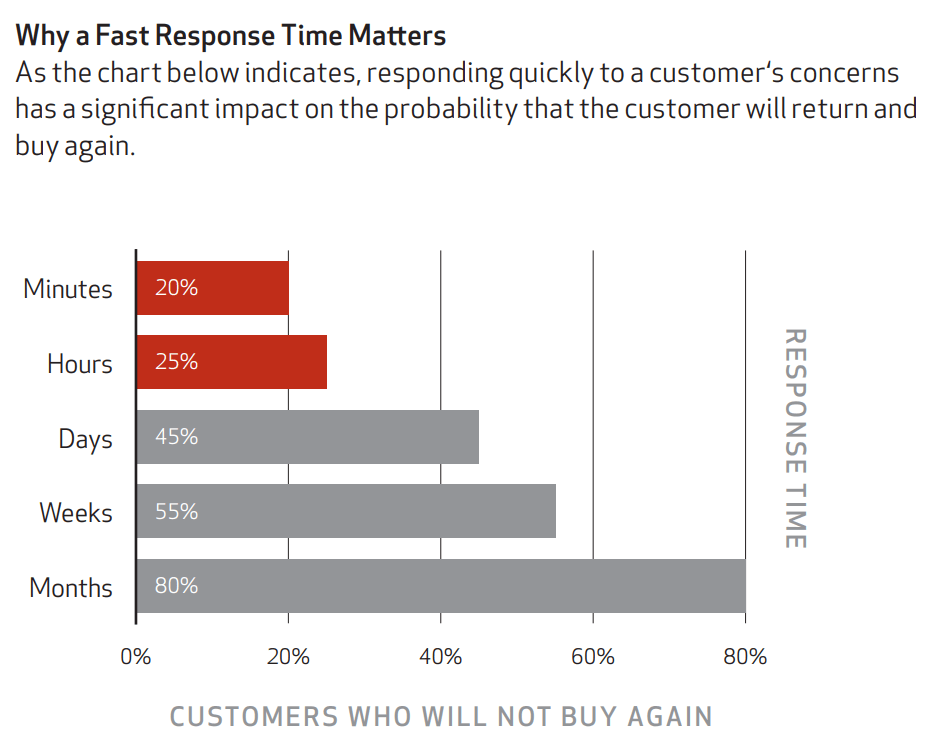
Customers today expect communication with service departments to be instant. In fact, they want immediate resolution of their concerns too. This is, indisputably, the first in the long list of the common problem with customer service that needs to be addressed by businesses.
Check out the reasons why this major problem occurs frequently:
- If the company does not establish a standard set of processes and practices to the field, answer and evaluate responses
- If there is no accountability on the part of the agent if response times have been really prolonged
- If agents end up doing a lot of manual work in the absence of adequate automation
- If agents are not trained to handle multiple queries simultaneously
To drive yourself back into the fast lane, you need to do the following:
- Create a process that outlines the workflow of what an agent should do when he or she receives a customer query with the focus of handling it promptly and efficiently
- Ensure that your agents are aware of their roles and responsibilities along with who they are accountable to if and when there are lapses in service
- Make use of technology and automation that helps take care of some of the repetitive tasks through a combination of canned responses that are framed to expedite the workflow
- Allow your customers to reach you via multiple channels including email, website chat, phone, hosted with contact center technology , social, text message and allocate resources accordingly
- Start creating a knowledge base to pre-package responses to the most commonly asked questions which also ensures that your service team remains consistent with their levels of service
Customer service issues, if left unattended, can be a frustrating experience for your client. Be proactive and keep your customers informed of how you aim to address their issues quickly.
2. When Customer Reps Do Not Listen Carefully to What the Client Needs
Your customer service problem-solving starts by diving due importance to listening. This is often overlooked, which may result in catching the customer service agent off guard with questions to which you may not have the appropriate answer.
You may not want to be in a position where you have to listen to customers complaining. Unless you give your full attention to what the customer is saying, it will be difficult to understand what they need or how to service their problem.
You can land up in this situation due to the following reasons:
- If the customer finds it difficult to explain the issue due to a lack of knowledge of relevant technical terms
- If the customer has been disappointed with the product or service as it did not meet their expectations
- If you simply do not know the answer to the concern because you did not pay attention to what the customer said
To help you deliver the right resolution, you can do the following:
- Ensure that you have understood the issue about what the customer requires and double-check the problem if required
- Follow it up with a genuine apology because many customers are simply looking for an acknowledgment of the mistake made by the business
- If you do not have a solution right away, then admit it to the customer right away
- On the other hand, if a ready solution is available, then share it with the customer immediately.
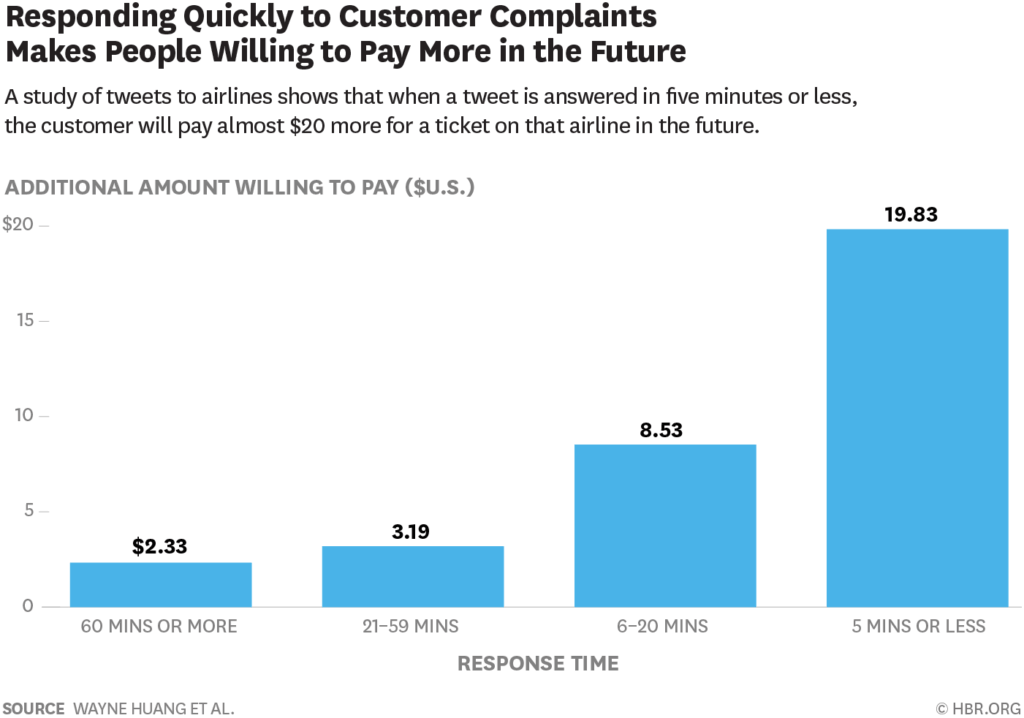
A study published in the Harvard Business Review reported that a complaining customer handled proactively in less than 5 minutes will go on to spend more on purchases in the future.
Y our agents should be quick to understand and analyze customer problems.
Remember that empathy, too, begins with active listening. Wouldn’t you call this an ideal customer service problem example ?
3. When the Customer Gets Transferred from One Department to Another
When people engage with businesses, and it does not turn out as per their expectations, it is the ultimate death knell to your reputation.
When a customer keeps getting transferred from one agent or department to another, it ensures that a customer will never return to you or your business in the future. Neither will they recommend you to people they know. This brings us to the second most common customer service problem.
Here are some reasons why a customer call may get transferred:
- If the customer agent does not have a ready solution to the query that has been put forward by the client
- If the rep is not the appropriate individual to offer a resolution to the issue
- If the agent feels that a superior will be able to offer a better solution to the problem
To ensure that the customer is not enraged, this is what you can do to pacify the situation before transferring the customer:
- Inform the customer the reason, why you need to transfer the call to another agent, senior manager or department
- Explain the present situation in detail so that the customer understands that sticking with you may take more time to resolve the issue
- Request permission to transfer the call and ask if the customer has any further questions that need answering
- Wait for a confirmation in the affirmative and then initiate the transfer
Remember that the customer may already be on the brink of losing it if the call has already been transferred several times. Try not to push him any further than you need to. You do want the experience to end on a positive tone.
4. When Customer Service Reps Are Rude to Clients
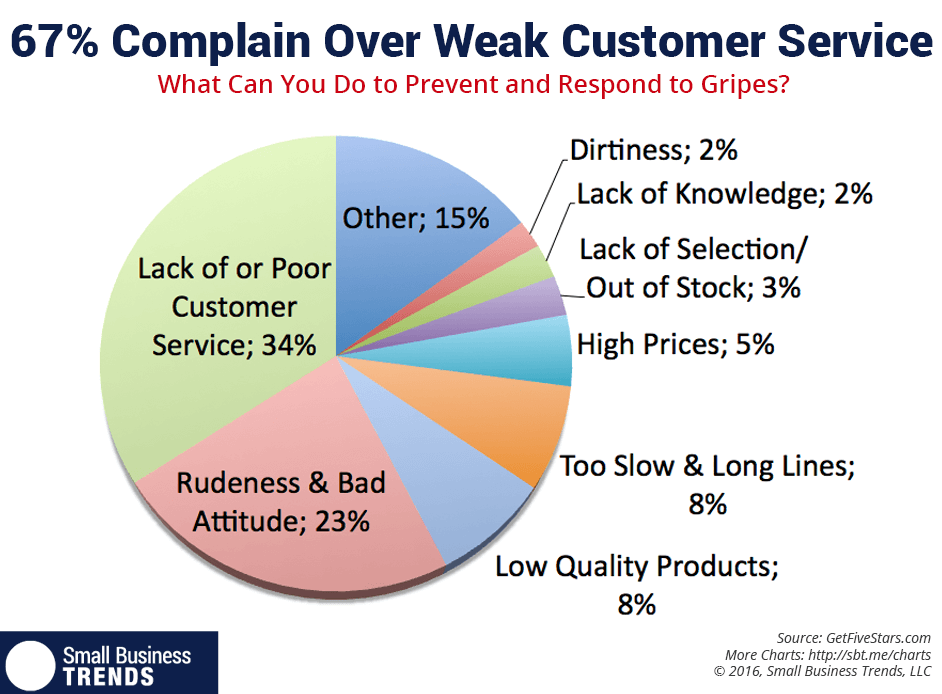
This is possibly the worst-case scenario for a business where the customer service rep has been rude to the client. You can’t deny that this is a tough situation to handle and is best avoided under all circumstances.
No matter how frustrated or high-pitched a customer might go at the time of conversing with a service agent, it does not give the rep the license to be rude to the customer in any way. Generally, such situations are handled by an experienced manager.
Circumstances that can lead them in the direction of being rude to the customer include:
- If the customer constantly challenges what the agent is trying to communicate to mitigate the situation to the best of their abilities
- If the customer is rude and abusive to the agent without any provocation from the rep’s side
- If the customer service agent has personal issues that he or she could not put aside whilst attending to customer calls
Following these guidelines can help you tackle even a sticky situation such as this:
- You need a team of service personnel with a positive and can-do attitude against hiring people just on the basis of their experience
- Ensure that they are empathetic to customer needs, no matter how badly the customer behaves or speaks
- Invest time and effort to upskill your team, especially in soft skills, through ongoing training and development programs
For now, it may seem like a rather far-fetched strategy to take care of a critical customer service problem and solution. In due course of time, you will see that it was worth the effort.
5. When You Cannot Offer A Solution to The Customer
There will be times when you may not have an instant solution for the customer. Telling that to the customer can be slightly tricky, especially if you notice that the customer is already annoyed. But dealing with an angry customer is part of the job description, and there is really no way of escaping it.
Customer service reps are only human and may not be able to offer a resolution of customer queries on the first contact. When customers have to chat or call the service department multiple times, it can be a hassle for them.
There may be several reasons why agents may not be able to offer immediate solutions. These include:
- If the business has encountered this specific customer query for the very first time in which case the solution guidelines have not been outlined for reference
- If the customer service rep has not received adequate training or information on the company, its goals, products, and services
- If the agent simply does not know the answer to the query because he or she has not proactively kept themselves updated on all relevant information and knowledge
You can go through possible solutions options in a scenario such as this:
- The agent can refer the query to a more experienced colleague or manager in the absence of an outline to the solution
- The company should pass on all relevant information to their customer service department and follow it up with periodic training sessions
- The agent should also invest time in learning about the company, their products, and services, etc. on their own
- Let the customer know that resolving the issue will take time and promise to get back within a reasonable timeline with the solution the query
Even though this is not the ideal situation to end the conversation, it is a common occurrence in customer service. Just make sure that whenever you get back to the customer, the solution should be able to meet their expectations.
A very important and viable solution here can be an updated knowledge base that the support reps should have access to as and when they need it. This will reduce the chances of inadequate or incorrect information being passed by reps to the customers. That’s a great customer service problem-solving example that anyone can refer to.
6. When Customers Cannot Get A Live Human Being
Be it live chat tools or phones, technology has allowed a significant percentage of customer service processes to be automated. While the life of a customer service agent has been simplified to a large extent, most customers find it really annoying to have a real human dealing with their issues.
Customers today want to talk to humans, not machines. This brings us to another key customer service issue that is quite common these days.
The top reasons why businesses are prioritizing automation in their customer service processes are:
- If the business is looking to minimize customer wait times and reduce friction, then automation is the obvious answer
- If the business wants to prioritize and attribute tasks efficiently through workflow automation
- If the business hopes to reduce resource costs in which case automating some of the tasks can be beneficial
- If the business is trying to attract a newer demographic who are not averse to conversing with a chatbot or IVR
Here is how you can avoid some of the pitfalls:
- Pick the right tasks such as repetitive jobs, resources for self-service , FAQs , knowledge bases, etc. that can be automated with a knowledge base software which also prevents you from alienating your customers
- Merge your service channels by converting them into an omnichannel strategy to collaborate effectively and efficiently ensuring that information silos do not happen
- Automation should be undertaken to support your human team and not as a substitute for your live agents
- Always request feedback to keep abreast of any change in customer opinion regarding the automation of your processes, either partially or fully
Automation requires a lot of planning to make sure it is successful in offering the right customer experience to your clients. Too much of it can undermine the goals of achieving good customer service. Now, this looks like the perfect customer service problem and solution example. Wouldn’t you agree?
7. When Customer Service Pushes the Wrong Product or Service
This situation can arise if the customer has a specific product or service-related query or maybe needs guidance to decide on, which is a suitable variant or model that will fit best with their needs.
Many times, customer service agents adopt a ‘ one size fits all ’ kind of approach. This may result in them pushing a product or service to the customer, thus, adversely impacting their experience with the business.
- If there is a serious lack of knowledge on the part of the agent where he or she does not know the USPs of specific products or services
- If the agent is unable to perform a competitive analysis of the buyer’s needs which may result in a guesstimate rather than an accurate evaluation
- If the rep does not take into account the customer’s interaction history , the products or services that interest him or her, what they’ve searched for in the past, and which pages on the site they have been browsing the most
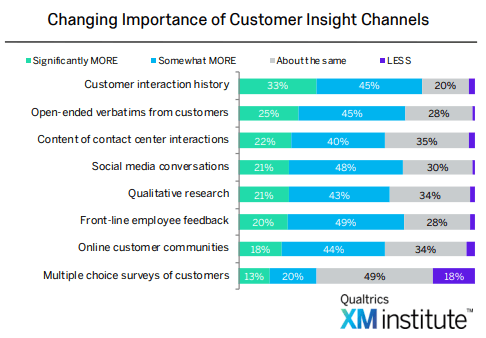
You need to do the following to get into the customer’s good books:
- Always listen to the customer’s requirements carefully and then carry out a detailed analysis to recommend the right product or service
- Indulge in some thorough visitor tracking to know what or where the customer has been browsing on your site
- Keep yourself updated with the latest product and service information including features, benefits, prices, and freebies
Your customer is looking up to you for directions. Presenting him or her with a range of helpful suggestions will ensure that you drive the conversation on a positive note. All staff should be trained so that customers receive a consistently delightful, not just satisfactory experience.
Using live chat software that helps you track customer history as soon as the customer says its first word can make things easier for you. Live Chat comes with a plethora of features that help you access customer information in real time and provide solutions that delight customers.
8. When Customer Service Does Not Follow Through with Promise
If the customer service department is unable to offer an instant solution to the client, they will ideally make a promise to deliver it within a stipulated period. In many instances, it has been observed that service reps are repeatedly missing to live up to what they’ve promised the customer.
This brings us to the next customer service problem of reps not following through with the promise that they have made to the customer. It can be infuriating when the issue remains unsolved due to this.
This customer service problem goes against the very ethos of the profession. However, some reasons why this may still happen are:
- If the processes are not in place to ensure that the agent receives alerts and notifications of an open ticket on time
- If the customer service agent is not proactive in passing the information to all relevant teams who need to be involved in solving the issue
- If the customer support agent is just plain lazy and not bothered about closing the issues with the customer
The following strategies can help fix the above-mentioned issues:
- When the agent follow-up on time, customers feel that they are cared for, which automatically increases customer trust and reliability in the brand
- Do not leave a lot of time gap between your last conversation and the follow-up and the faster you reach out, better are the chances of turning an average experience into a great one
- If the customer has contacted your service department during office hours, be sure to return the call, and email within 24 hours
- Try and avoid ‘Yes’ or ‘NO’ responses when you are following up with the client as opposed to asking more open-ended questions to get more information
No matter what the reason or type of follow-through is, always remember to thank your customers for continuing to be loyal patrons of your brand. A simple ‘Thank You’ will suffice. Streamline processes with the integration of a helpdesk software to ensure that the customer experience is top-notch.
9. When There Is Lack of Customer Centricity
It is easy to lose the culture of customer centricity as the business keeps expanding and growing. When you fail to place the customer at the core of your business, eventually, everything starts falling apart.
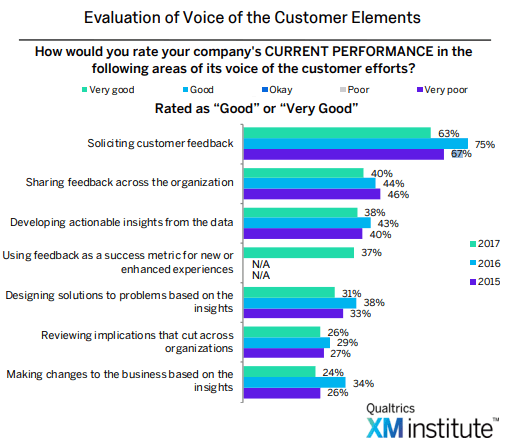
Temkin’s State of Voice of the Customer Programs 2017 report cited that 67% of large companies rated themselves as good at soliciting customer feedback , yet only 26% think they are good at acting on it.
This brings us to the next problem with customer service, where it is internal barriers are leading to behaviors that are detracting businesses from promoting a customer-centric culture.
Check these top reasons why customer-centricity issues are not being addressed:
- If the management and top leadership is weak, there will be little or no opportunities to develop the business as a customer-centric organization and this emotion percolates right to the depths of the customer service department too
- If the customer agents are weak and untrained, they will not be able to assess customer needs and expectations effectively
- If there is an overall lack of vision, the customer service department can never excel at their jobs as excellent customer service starts right from the top
Some of these tips can help get you on track:
- Strengthen communication channels between the executive, mid-level, and frontline teams
- Create a more holistic picture of your customers by continually communicating, sharing goals, and linking information and data for arriving at evidence-based decisions
- Empower your service agents to make decisions that also propel customer growth strategies
With a vision that is purpose-driven and a clear path forward will help to draw upon emotional belief systems and team member rationale to walk the talk of a customer-centric organization.
10. When Customer Service Is Not Aligned to Customer Journey
Bad customer experience at any point in the customer journey can absolutely ruin the relationship between the client and the business. Just having a good team in place is not enough. The service team should be aligned with the needs and desires of the customers throughout their lifecycle.
This brings us to the last problem with customer service, where businesses are not paying adequate attention to getting their customer service workflow in line with the customer’s lifecycle.
The key reasons are:
- If the business fails to recognize the importance of mapping the customer journey that is aligned with your brand
- If the top leadership is unable to comprehend the worth of mapping customer journeys to help achieve organizational goals
- If the management is not aware of how customer journey mapping can drive growth and offer profitability for the business
Follow these guidelines to succeed:
- Get out of the inside-out perspective of customer journeys because it is grounded with a biased viewpoint
- Focus on how customers and prospects interact with the brand over multiple touchpoints including your website and social channels, outbound marketing , sales team and customer service department
- Do not make the mistake of overlooking all relevant participants in the customer journey or your risk transforming the customer map into a superficial tool with little or no value
Always base your customer mapping on research that will help your service agents to understand the customer experience from the outside-in. Remember to capture the entire journey and always highlight the key moments that push your customers to stay on the course of their purchase path.
Wrapping Up
Competition is fierce in this global marketplace, and customer service problems are inevitable. And sometimes it can be quite overwhelming to keep up with the ever-evolving innovations that have tremendous control over your customer experience, no matter how good your business is.
It will always be outstanding customer service that will make them come back for more. People want to feel special. By addressing their customer service problems, you want your customers to walk away from the interaction feeling not only satisfied with the outcome but valued, understood, and prioritized. Try to adopt the solutions mentioned above and wherever required make use of a competent customer support tool to upgrade your customer service and delight your customers.
FAQ’s
Why is customer service problem solving important.
It is crucial to solve customer service problems because you want your customers to be happy and satisfied. It also allows the business to identify gaps in their service and figure out a course of action to take corrective measures.
With a positive image of the brand, your customers will be more than happy to recommend it to their family and friends.
How do you write a problem statement for a customer?
A problem statement for a customer primarily involves writing out the detailed description of a specific issue raised by a client that needs to be addressed by the team responsible for problem-solving.
Start by describing the present condition of the customer’s situation and explain the problem from a customer perspective. Outline any possible financial implications that may be incurred as a result of solving the problem. Without evidentiary support, arriving at a final solution will be impossible. Conclude by explaining the obvious advantages of adopting the resolution.

What are the types of dissatisfied customers from customer service?
Generally, dissatisfied customers as a result of poor customer service can be classified into eight types – meek, aggressive, high roller, rip-off, expressive, passive, constructive, and chronic.
What are the problems faced by customers?
There are several common problems that customers face today.
Topping the list is the lack of authentic information on products and services. Along with that, complex navigation to specific pages, followed by connection issues with digital payments, is also quite a hassle. Poor standards of customer service, after-sales service, and vague return policies also create problems for customers frequently.
How to solve customer service problems?
Handling customer service problems is never an easy job. While it may seem like a challenging process, remember that even the frustrated customer is looking for a solution.
The best way to tackle such situations is by carefully listening to the issue at hand and without interruption. Acknowledge the issue and ensure that you have understood the concern from the customer’s point of view. Apologize and then offer a solution if it is readily available.
Alternatively, if the issue needs more investigation or you do not have an instant resolution, communicate the same to the customer. End the call thanking the customer for calling in and asking if he or she needs any further assistance.
Remember that customer service means taking the good with the bad.

About the author
ProProfs Editorial Team
ProProfs Help Desk Editorial Team is a passionate group of customer service experts dedicated to improving your help desk operations with top-notch content. We stay ahead of the curve on trends, tackle technical hurdles, and provide practical tips to boost your business. With our commitment to quality and integrity, you can be confident you're getting the most reliable resources to enhance your customer support initiatives.
Related Posts

Top Benefits of Customer Service Reports

What Is Customer Communication Management? [Benefits, Types & Tools]

20+ Best Customer Communication Tools for 2024

Customer Service vs. Customer Experience: Key Differences
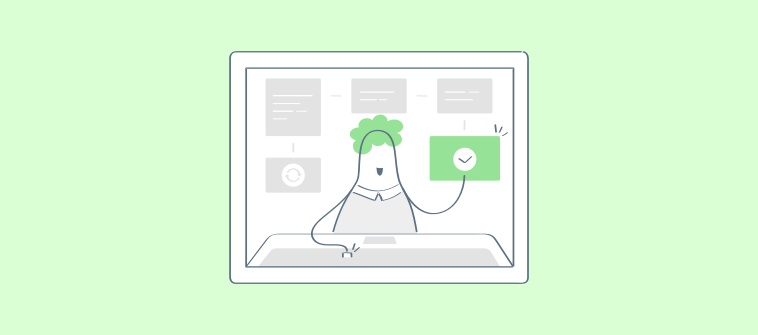
Customer Service Email Etiquette: 10 Golden Rules You Need to Follow

What Is Ticket Deflection? 10 Tips to Boost Ticket Deflection & Delight Customers!
How to Conduct Effective Problem-Solving Sessions with Customer Service
October 20, 2023
Discover the secrets to conducting highly effective problem-solving sessions with customer service in this comprehensive guide.
Arpit Bhavsar

In the customer service industry, effective problem-solving is a crucial skill that can greatly impact customer satisfaction and business performance. When handled properly, problem-solving sessions provide an opportunity to identify and address issues that customers may encounter. This article will delve into the importance of problem-solving in customer service and provide key elements and techniques for conducting successful sessions. Additionally, we will explore common challenges faced during problem-solving sessions and offer strategies to overcome them.
Understanding the Importance of Problem-Solving in Customer Service
Problem-solving plays a significant role in ensuring customer satisfaction. When customers face challenges or issues, their overall experience can be negatively affected. However, by actively engaging in problem-solving sessions, businesses can effectively address customer concerns and improve their experience. By resolving issues promptly and efficiently, companies can enhance customer loyalty and build long-term relationships.
Customer service is a vital aspect of any successful business. It is the backbone of customer satisfaction and retention. When customers encounter problems or difficulties, it is crucial for businesses to have a robust problem-solving mechanism in place. By acknowledging and addressing customer concerns, companies demonstrate their commitment to providing exceptional service and ensuring customer happiness.
Problem-solving in customer service goes beyond simply fixing a specific issue. It involves understanding the root cause of the problem and implementing long-term solutions to prevent similar issues from arising in the future. This proactive approach not only resolves immediate concerns but also helps businesses improve their overall operations and customer experience.
The Role of Problem-Solving in Customer Satisfaction
Customer satisfaction is the key to success for any business. By addressing customer issues through problem-solving sessions, companies demonstrate their commitment to resolving problems quickly and effectively. By actively listening to customers’ concerns and providing appropriate solutions, businesses can restore trust, boost customer satisfaction, and ultimately improve their reputation in the market.
Problem-solving sessions provide an opportunity for businesses to engage with their customers on a deeper level. By actively involving customers in the problem-solving process, companies show that they value their opinions and are dedicated to meeting their needs. This collaborative approach not only helps resolve immediate issues but also strengthens the bond between businesses and their customers.
Furthermore, effective problem-solving can lead to positive word-of-mouth referrals. When customers have a positive experience with a company’s problem-solving process, they are more likely to share their satisfaction with others. This can result in new customers and increased brand recognition, further contributing to business growth and success.
Improving Business Performance through Effective Problem-Solving
Effective problem-solving can also contribute to improved business performance. By identifying and addressing underlying problems, companies can streamline their operations and optimize their products or services. This, in turn, leads to increased efficiency, decreased costs, and improved overall performance. Problem-solving sessions provide a valuable platform to explore creative ideas and innovative solutions, enabling businesses to stay competitive in the market.
During problem-solving sessions, businesses have the opportunity to gather valuable feedback from customers. This feedback can provide insights into areas that require improvement, allowing companies to make informed decisions and implement necessary changes. By continuously seeking feedback and actively working towards resolving issues, businesses can adapt and evolve to meet the ever-changing needs and expectations of their customers.
Moreover, effective problem-solving can help businesses identify potential opportunities for growth and expansion. By analyzing customer feedback and addressing recurring issues, companies can uncover new market demands and develop innovative solutions to meet them. This proactive approach not only enhances customer satisfaction but also opens doors to new revenue streams and business ventures.
In conclusion, problem-solving is an integral part of customer service and business success. By actively engaging in problem-solving sessions, businesses can address customer concerns, improve satisfaction, and drive overall performance. Effective problem-solving not only resolves immediate issues but also paves the way for long-term growth and success in the market.
Key Elements of a Problem-Solving Session
A successful problem-solving session comprises several key elements that ensure a systematic approach to addressing customer concerns.
In today’s fast-paced business environment, problem-solving has become an essential skill for organizations to thrive. Whether it’s resolving customer complaints, improving internal processes, or finding innovative solutions, effective problem-solving is crucial for success.
Identifying the Problem: The First Step
The initial step in conducting an effective problem-solving session is to identify the root cause of the issue. This requires active listening and gathering relevant information from both customers and internal stakeholders.
During this phase, it is important to create an open and non-judgmental environment where customers feel comfortable expressing their concerns. By empathizing with their experiences and actively seeking their input, businesses can gain valuable insights into the problem at hand.
Additionally, involving internal stakeholders such as employees from different departments can provide a holistic view of the issue. Their perspectives and expertise can uncover underlying factors that may have contributed to the problem.
By examining the problem from various angles, businesses can gain a comprehensive understanding of the situation and lay the foundation for finding the right solution.
Developing Potential Solutions: Brainstorming and Beyond
Once the problem is identified, the next step is to brainstorm potential solutions. In a problem-solving session, team members should be encouraged to contribute their ideas freely.
Brainstorming sessions can be conducted in various formats, such as group discussions, virtual collaboration platforms, or even through anonymous suggestion boxes. The key is to create an environment where creativity flourishes and no idea is dismissed without consideration.
This collaborative approach allows for diverse perspectives and creativity, increasing the chances of finding an effective solution. Moreover, considering multiple alternatives helps in evaluating the feasibility and viability of each potential solution.
During the brainstorming phase, it is important to focus on generating a wide range of ideas without prematurely evaluating them. This encourages out-of-the-box thinking and prevents the group from getting stuck on a single solution too early in the process.
Once a substantial list of potential solutions is generated, the team can move on to the next step of evaluating each option based on criteria such as cost-effectiveness, practicality, and alignment with the organization’s goals.
Implementing and Evaluating the Solution: The Final Steps
After developing potential solutions, it is essential to implement and evaluate the chosen solution. This involves creating an action plan, allocating resources, and assigning responsibilities.
During the implementation phase, effective communication is crucial to ensure that everyone involved understands their roles and responsibilities. Clear instructions, regular progress updates, and feedback mechanisms help keep the team aligned and motivated.
Once the solution is implemented, ongoing evaluation and feedback from customers and team members help to refine the solution as needed, ensuring its effectiveness in addressing the initial problem.
By continuously monitoring the solution’s impact and gathering feedback, organizations can make necessary adjustments and improvements to optimize its outcomes.
Moreover, documenting the entire problem-solving process, including the identified problem, potential solutions, and the chosen solution, can serve as a valuable reference for future problem-solving sessions. This knowledge repository can help organizations build upon past experiences and avoid reinventing the wheel.
In conclusion, a well-executed problem-solving session involves identifying the problem, developing potential solutions through brainstorming, and implementing and evaluating the chosen solution. By following a systematic approach and involving diverse perspectives, organizations can effectively address customer concerns and drive continuous improvement.
Facilitating a Problem-Solving Session: Essential Techniques
Facilitating a problem-solving session requires specific techniques to ensure productive outcomes.
Setting the Stage for a Productive Session
The facilitator plays a critical role in setting the stage for a productive problem-solving session. This involves creating a conducive environment where participants feel comfortable expressing their ideas and concerns. Clearly defining the session’s objectives and establishing ground rules fosters open communication and sets the tone for collaborative problem-solving.
Encouraging Open Communication and Collaboration
Open communication and collaboration are essential for effective problem-solving. The facilitator should encourage active participation from all team members, ensuring that everyone has an equal opportunity to contribute their insights. Creating a non-judgmental atmosphere promotes free thinking, enabling teams to explore a wide range of ideas and perspectives.
Guiding the Team towards Effective Solutions
The facilitator’s role also includes guiding the team towards effective solutions. This involves keeping discussions focused and on track, ensuring that the team does not get sidetracked by unrelated issues. The facilitator should facilitate consensus-building, helping the team to align and make informed decisions. Effective problem-solving requires both critical thinking and collaboration.
Overcoming Common Challenges in Problem-Solving Sessions
While problem-solving sessions are beneficial, they can also present challenges that need to be overcome to achieve desired outcomes.
Dealing with Resistance and Conflict
Resistance and conflicts often arise during problem-solving sessions, hindering the progress. The facilitator should act as a mediator, promoting a respectful and inclusive environment. Encouraging active listening and empathy among team members helps to overcome resistance and conflicts, leading to a more productive session.
Ensuring Participation from All Team Members
Unequal participation from team members can prevent a problem-solving session from reaching its full potential. To ensure that all team members are engaged, the facilitator should explicitly ask for input from quieter team members and ensure that dominant team members do not monopolize the discussion. Establishing a safe space where everyone feels comfortable sharing their thoughts is crucial for fostering equal participation.
Maintaining Focus and Momentum throughout the Session
Problem-solving sessions can sometimes lose focus or momentum due to lengthy discussions or side conversations. The facilitator must keep the session on track by summarizing key points, redirecting discussions when necessary, and managing time effectively. Maintaining a sense of urgency and keeping teams motivated ensures that the session remains productive from start to finish.
In conclusion, conducting effective problem-solving sessions is vital for customer service excellence. By recognizing the importance of such sessions and implementing key elements and techniques, businesses can address customer concerns efficiently and improve overall business performance. Overcoming common challenges requires facilitators to create a supportive environment that fosters open communication, collaboration, and effective decision-making. By adopting these strategies, companies can enhance customer satisfaction, drive innovation, and achieve enduring success.
CIPD Level 3 Course : The CIPD Level 3 Certificate in people practice is ideal for anyone looking to start a career in either HR or Learning and Development. CIPD Level 5 Course HR : The CIPD Level 5 Associate Diploma in People Management will help you build on your existing HR knowledge. CIPD Level 5 Course L&D : The CIPD Level 5 Diploma in Organisational Learning and Development is the most comprehensive course available for L&D professionals, ideal for you if you want to formalise your existing experience, skills and knowledge. CIPD Level 7 : The CIPD Level 7 Advanced Diploma is aimed at expanding learners’ autonomy so they can strategically direct organisations and their people.
If you aspire to become a digital marketing manager or explore the senior level of your career, have a look at the squared digital marketing programme .
HR training, delivered seamlessly online for busy professionals
About the author, related articles.
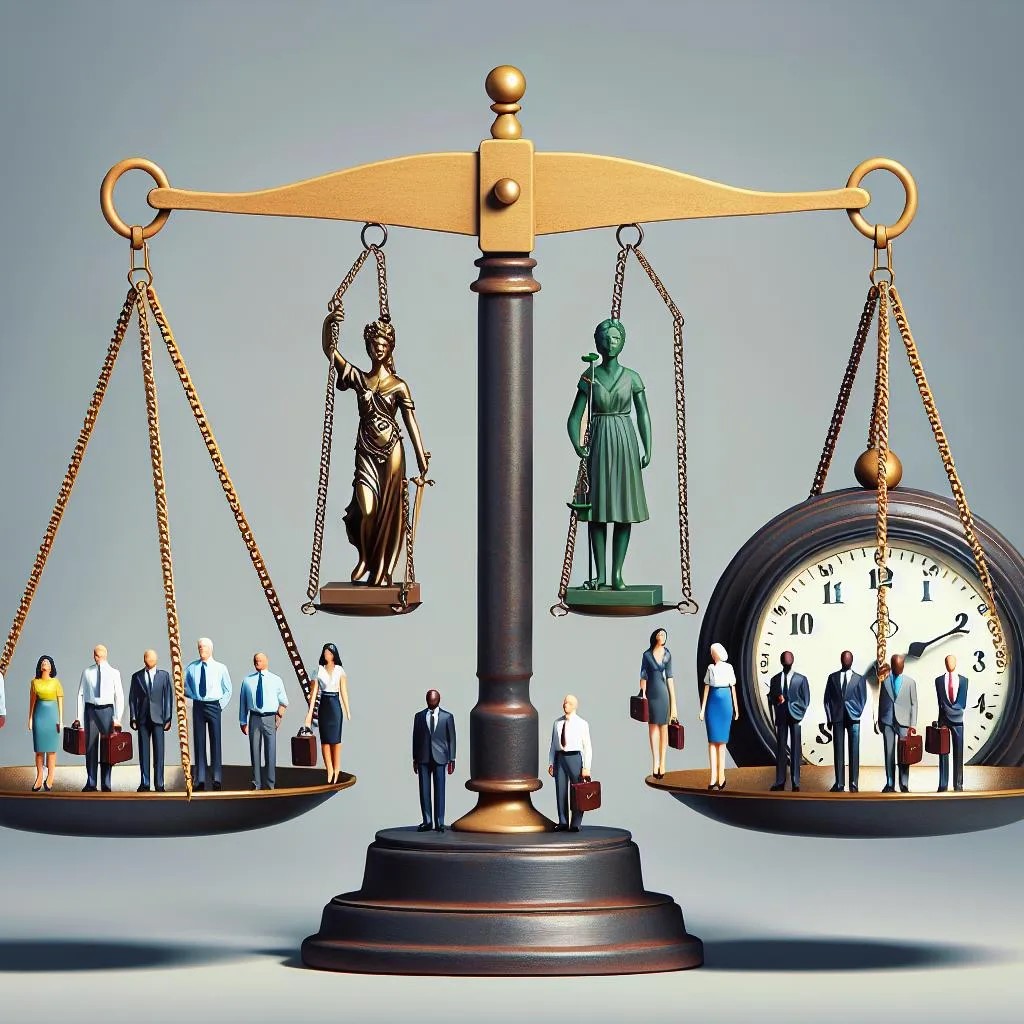
Achieving a healthy work-life balance is essential for employee productivity and job satisfaction. Strategies include flexible work arrangements, well-being initiatives, time management, clear communication, career growth, remote work optimisation, and strong leadership. Incorporating CIPD principles and employee feedback ensures these strategies are effective and beneficial.

In today’s fast-paced world, we understand that financial well-being is a crucial aspect of overall employee satisfaction and productivity. It’s not just about earning a paycheck; it’s about feeling secure and having peace of mind when it comes to financial matters. That’s why we’re diving deep into the steps necessary to ensure employees’ financial well-being, […]

Diversity and inclusion are crucial for business success. HR can cultivate this through CIPD-based inclusive hiring practices, diverse employee resource groups, cultural competency training, equal opportunities for advancement, and inclusive policies. These strategies promote innovation, improve productivity, and ensure a fair and thriving workplace for all employees.
The Guide to Effective Customer Service Problem Solving

Cases that start as “I don’t know” quickly become “I figured it out!”
“I don’t know” isn’t a good enough answer in customer support. When customers come to you with unique problems and unusual questions, we can’t refuse to answer them. In this guide, we’ll give you the steps to turn that “I don’t know” into something better:
“I don’t know, but I’m going to figure it out.”
With this guide to effective customer service problem solving, we give you a three-step process to follow:
- take stock of the information you’ve been given,
- gather any additional information you need,
- and then work to solve the problem and respond to the customer.
Let’s get started.
Assess the information you have
Information is the most important tool in your tool belt. The first step in solving any problem is to identify all the information you already know. Whether this case was escalated to you for help, or if you’ve just realized that there may be more than meets the eye to this problem, take the time to lay out everything you know.
Customer’s tone
How does your customer feel about the situation? Are they technically minded, or are they struggling to describe technical issues ? Are they calm and cooperative? Or combative and frustrated? Is this a deal-breaker for them? Or is it just a weird bug? The demeanor of your customer will inform how you approach the situation going forward.
Customer’s history
Do a quick review of the customer’s previous support interactions, any purchases they’ve made, what plan type they are on, etc. This context will help you replicate the issue, as well as respond appropriately to the customer.
What’s happening?
Do you know enough about what’s happening? Have they sent through screenshots? Error messages? Console data? What were they trying to accomplish? It doesn’t need to be a technical problem for this step to still be important. Understanding what the customer’s motivation is will help solve a variety of issues.
Has this happened before?
It’s very unlikely that this is a brand new problem. Has the customer reported it happening before? Has any other customer reported it happening before? Help desk search functions are incredibly powerful tools. Search error messages and problem statements to see if other customers have reported similar issues. You can also search the internet to see if it’s a third-party issue. For example, if you’re using a third-party payment system, you might be seeing one of their errors when customers are purchasing on your website.
Gather more information
Okay, we’re partway there! If you didn’t have an epiphany while you were sorting through the information already at your disposal (sometimes that happens!), it’s time to gather more data.
Can you replicate it?
There’s no way to get more information than to get hands-on with the problem. Do you see the same thing happening?
If not, what information do you need to replicate it?
If you can’t replicate the issue, it’s probably because you’re doing something different or in a different environment. What information do you already have about the customer’s environment? What do you need to know in order to do exactly the same thing?
- Environment: browser version, extensions (try it incognito?), other settings.
- Steps: can they record a screengrab? What are they trying to do? What error message do they get?
- Specific settings: what account are they using? What version of your product are they using? If you can try it in their account (using “admin mode” or “god mode” so you can see it without asking for their username or password), does it happen for you as well?
Ask other people
Now’s the time to check in with other people on your team to see if they have any ideas. Have they ever seen something similar?
Depending on your relationship with your product and engineering team, you may also be able to check in with them at this point. However, many teams have a more formal bug reporting process in place to prevent “side of the desk” questions from interfering with their workflow. If that’s the case, you may want to do more research first.
Solve the problem
Now you’ll need to actually solve the problem for the customer. It might require finding a workaround, or reporting a bug to the development team.
Bug or works-as-designed?
Once you’ve replicated the issue, you’ll need to decide whether that is the way it’s supposed to work, or if you’ve found a bug. If it’s a bug, congrats! You can file a bug ticket and ask your engineering team to fix it. If it’s a feature or a design flaw, you may need to make a case for an update. In this case, the complex problem may turn into a feature request.
Is there a workaround?
Can you get to the customer’s desired end result in another way? Whether the issue turns out to be a bug or a feature, if you can find another way to achieve their goal, your customer will be happy!
Write a great response
Once you’ve replicated the issue, solved the problem, found a workable solution, or at least documented the bug for a future fix, you need to get back to the customer. Writing an empathetic, thorough response can make all the difference in a complex situation.
In many cases, your response will follow the same steps as a great customer service apology :
- Offer explanation
- Fix the problem
- Wrap it up and let them know what’s next
Resources for Customer Service Problem Solving
We all need a little help sometimes. If you’re learning how to fix more difficult problems, these resources can help.
Help Scout’s Art of Troubleshooting
On a mission to troubleshoot a bug? This guide is super helpful .
Support Details website

Learn how to use Developer Tools, especially Web Consoles

Be like Sherlock, and look for clues!
Customer support requires communication skills and problem-solving skills. Looking for the clues to solve the puzzle becomes a big part of your job as soon as you start to take on more difficult customers. With this guide to customer service problem solving, you’ll have a systematic way to approach those tough questions. Cases that start as “I don’t know” quickly become “I figured it out!”
How did you like this blog?

Sarah Chambers is a Customer Support Consultant and Content Creator from Vancouver, Canada. When she’s not arguing about customer service, she’s usually outdoors rock climbing or snowboarding. Follow her on Twitter @sarahleeyoga to keep up with her adventures.
Related articles

7 Support Phrases Customers Hate to Hear (and What to Say Instead)
How to respond to negative reviews about your business, how to write a helpful bug report that gets your issue fixed, the best customer service tips every week. no spam, we promise..
Get guides, support templates, and discounts first. Join us.

COMMENTS
What is problem-solving in customer service? Solving customers’ problem is more than just fixing the bugs or providing detailed instructions. It’s about being prompt, patient, polite, and staying by their side all the way through.
The term customer service problem-solving refers to the process that businesses and customer service representatives use to identify and resolve customer service issues.
Customer service problem-solving is a discipline focused on optimally identifying, addressing, and resolving issues customers encounter with a product or service. It is important to note that, contrary to its name, customer service problem-solving is not just about fixing customer complaints.
Effective customer problem solving is essential in the dynamic world of customer service, turning every interaction into an opportunity for positive change. As highlighted earlier, addressing and solving customers' problems is not just about quick fixes but about creating lasting relationships.
Problem-solving skills are crucial in customer service because they turn frustrating situations into bright opportunities. When you effectively identify and address customer issues, you also show that you genuinely care about their satisfaction.
Solving customer service problems is crucial as it impacts other business areas. Businesses need to more customer-focused and align their services that delight customers by solving their problems effectively.
By mastering critical thinking, you not only solve problems more effectively, but also build stronger, trust-filled relationships with your customers. What Exactly Do We Mean by Critical Thinking? Definition, Pros, and Cons
Worried about how to manage customer service problems this 2020? Well, we bring to you a range of solutions to resolve them fast for delightful experience.
Problem-solving in customer service goes beyond simply fixing a specific issue. It involves understanding the root cause of the problem and implementing long-term solutions to prevent similar issues from arising in the future.
With this guide to effective customer service problem solving, we give you a three-step process to follow: take stock of the information you’ve been given, gather any additional information you need, and then work to solve the problem and respond to the customer. Let’s get started. Assess the information you have